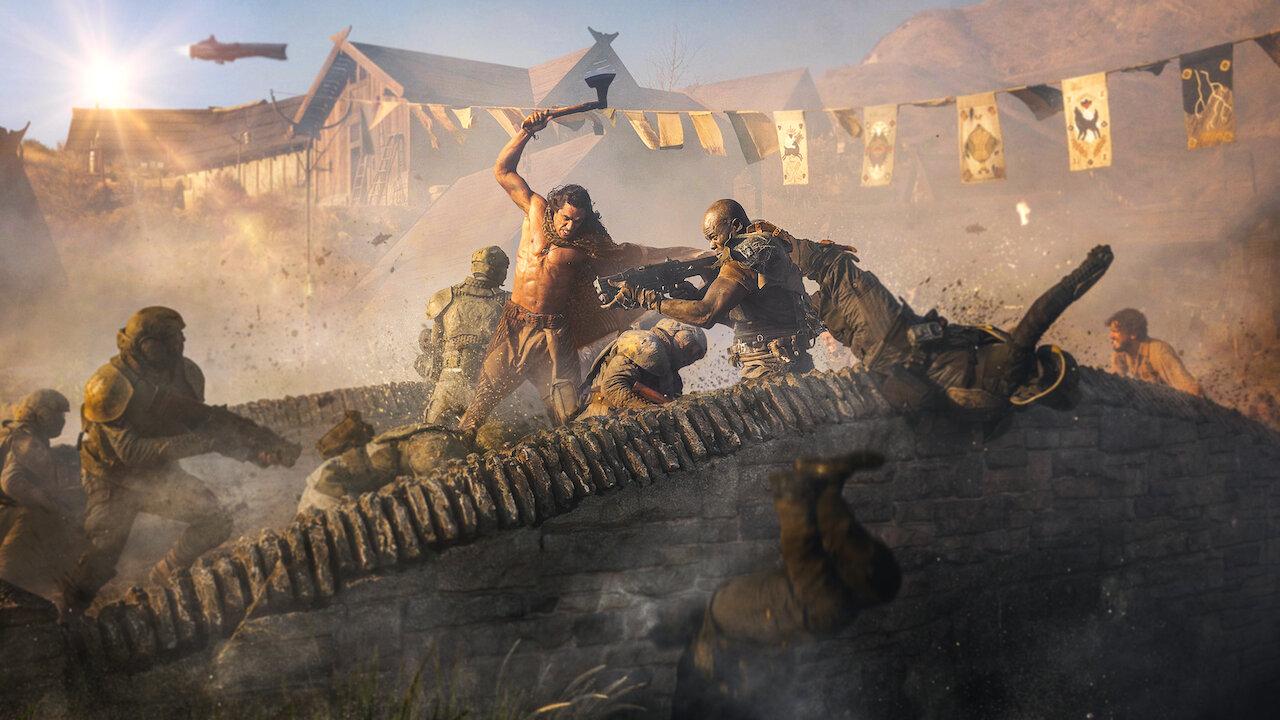For a year at the movies that include Dune: Part Two (2024), Furiosa: A Mad Max Saga (2024), Twisters (2024), and Joker: Folie à Deux (2024), 2024 is not going to be short on highly anticipated sequels to beloved predecessors. But where does a sequel to a bad film land in the sea of Netflix’s algorithm? Zack Snyder’s follow-up to his 2023 space opera Rebel Moon – Part One: A Child of Fire is just as inconsequential as the first film; Rebel Moon – Part Two: The Scargiver (2024) feels like a fart in the wind. Born from a lackluster imagination, stretching out to a dull four hours, and split into two films, Rebel Moon quickly evaporates from the public consciousness.
Snyder’s long-awaited finale blends Star Wars (1977) and Seven Samurai (1954) into a Frankenstein’s monster of a movie that meanders lifelessly in search of some meaning or acceptance of what it is. Yet, the epic conclusion is only one part of the sterile experience of watching a film that doesn’t offer anything resembling entertainment, unique characters, or storytelling that isn’t laughably hokey. Rebel Moon has no identity, no discernable characters, or innovative storytelling that can muster an emotion from the viewer. It exists to occupy space on the Netflix homepage as you scroll to rewatch something you cherish or have an attachment to.
Indeed, Rebel Moon is a relic from the Scott Stuber regime of Netflix’s film department as he desperately tried to manifest original franchises by injecting hundreds of millions of dollars into underwritten scripts. Snyder jumped onto the gravy train before Stuber’s departure, but, as Dan Lin sets to take over, it seems Rebel Moon will be the last remnant of this Netflix era. No longer will auteurs be given exorbitant amounts of money and creative freedom so that they may pursue their unfiltered visions.
Snyder’s filmography has always been exemplary, even when his scripts feel half-baked with incoherent ideas or underwhelming characterizations. A Snyder film is an experience in and of itself that deserves admiration. It usually helps when Snyder can take pre-existing I.P. and turn them into cinematic wonders because his imagery feels tactile and detailed, operating in a mode that so few directors do.
Somehow, that visual flair is largely absent in The Scargiver. The first film, thanks to its get-the-gang-together plot that gathered up our merry band of misfit warriors from other worlds to help the helpless farming colony of Veldt, was at the very least allowed to be visually inventive due to its sheer breadth, but Snyder centers his sequel on bland scenic farmlands t that feel removed from the speculative alien worlds briefly touched upon in the first film. Kora (Sofia Boutella), Titus (Djimon Hounsou), Gunnar (Michiel Huisman), Nemesis (Doona Bae), Tarak (Staz Nair), and a plethora of unremarkable supporting characters round out the rebellious army that will stand and fight against Atticus Noble (Ed Skrein), an over-the-top admiral villain hellbent on bringing Kora (the eponymous Scargiver, as she leaves scars to those she battles) back to the Motherworld. Meanwhile, an observer in the form of a mechanical robot knight, Jimmy (Anthony Hopkins), narrates and occasionally interacts with characters whenever the plot deems him necessary.
The film is divided into two portions: in the first half, the interstellar warriors help to train the citizens of Veldt, as the Imperium forces will arrive in five days. They all get to know each other and form the paper-thin bonds that are supposed to make us feel for them once they’re in battle. The second half is the battle itself, the ultimate goal of this two-film series. Yet what results is a middling, unexceptional fantasy epic that is far too self-serious to be silly and far too underwritten to be captivating.

Performances run the gamut of being semi-engaging to being uninteresting. This isn’t due to their acting abilities; the stunted writing relegates them to one of two things: physical beings of immense, beautiful form or vessels for exposition dumps to dig the plot’s vapid lore even deeper. Boutella is an exciting presence mainly due to the physicality of her performance. Between The Kingsmen (2014) and Climax (2018), Boutella can excel even with minimal dialogue. While she only gets to be a bad-ass warrior on mere occasions, she’s also sadly saddled with some of the more overwrought writing. Kora has to fall in love with Gunnar because the script asks her to recount her past relationship as an Imperium soldier who committed heinous acts.
The rest of the cast suffers at the hands of this expositional writing, as they’re not allowed to have any interiority or natural conversations. They act only as informational dump trucks to pad out the running time of an already elongated film. Skrein is a feckless villain, only there to look like a sniveling antagonist — the most unconvincing effect in the entire movie. Atticus does not excuse fear or menace; he exudes more bumbling incompetence and mustache-twirling than a force of malevolence.
The action is fairly standard for this sort of science fiction spectacle, yet as Netflix continues its adamant stance against theatrical distribution, the dazzling effects and sword fights feel like blips on any standard home television set. The expansive world and fanciful space flights act more as screensavers on your screen than the engrossing, luscious extravaganza Snyder and company hope to exhibit. Seeing Snyder’s films on a theater screen would lend the film some credence of nobility, as seeing the dazzling effects and fight sequences would likely prove compelling.
Yet, even before the action begins, we endure the tedium of characters spousing their backstories and one-dimensional romances that mean nothing. One section revolves around our main heroes sitting at a table and explaining to each other (and the audience) why they are the way they are. Surely this should’ve been remarked upon in the first film, yet Snyder’s co-writers, Kurt Johnstad and Shay Hatten, continue to waste precious minutes on giving these thinly conceived characters depth beyond their skills as fighters. For example, Kora’s trauma-dumping feels so contrived that it would be mildly interesting if it weren’t poorly written. Or take the sparkless romance that develops between her and Gunnar, hoping to raise the ante when they find themselves on an Imperium ship.
Rebel Moon – Part Two aims to provide enough enthralling action and dazzling images to warrant the time invested in this world. After spending nearly four hours with Kora and her group of warriors —and plenty of slow-motion harvesting montages— we’re meant to impart ourselves in the drama of hoping the underdog beats the evil, cartoonishly villainous regime. Yet, when a character on the “good side” dies, I feel nothing. The mood is somber as the person looks solemnly into the gunfire and lasers shooting everywhere, slowly succumbing to their wounds. Tom Holkenborg’s choral majestic music blares the soundscape, hoping to prod a tinge of sadness for their death, yet Snyder’s writing and world-building reduce characters to ineffectual. A mere shoulder shrug is all one can do as characters written so poorly die solely to make the climactic battle feel important.
The movie operates on autopilot, void of any palpable emotion or directorial vision. Dennis Villeneuve’s science fiction sequel provided an organic climax that escalated the narrative tension and thematic elements to a propulsive action sequence. Snyder’s attempt at a space opera results in a middling, sloppy thud that plays more like an apathetic exercise of fan-fiction writing.
Review Courtesy of Amritpal Rai
Feature Image Credit to Netflix via The Rolling Stones
